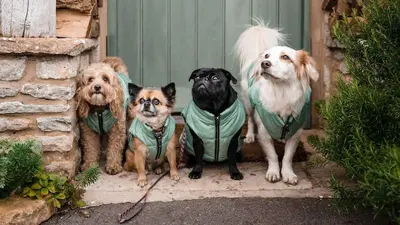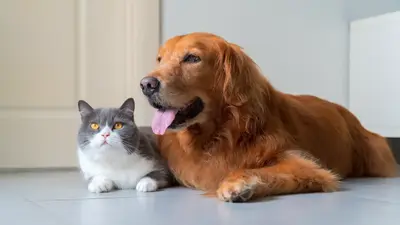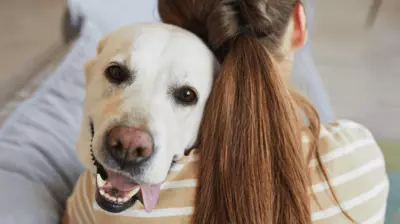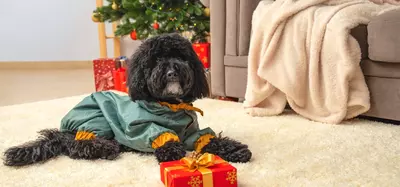Safe and Toxic Houseplants for Dogs
- 30 Jan 2024
- 5m read
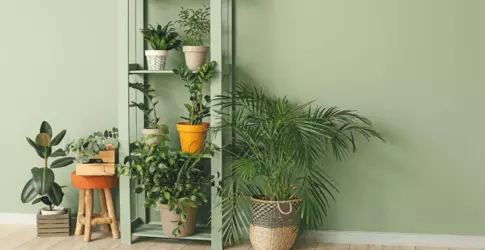
The green-thumbed among us revel in the purchase of houseplants. However, as pet parents, it's crucial to strike a balance between aesthetics and the safety of our pups.
Which Houseplants Are Poisonous to Dogs?
If you have a dog, it is advised that you avoid having the following houseplants in your home as they are poisonous if ingested.
Ivy, including English Ivy
Ivy can be toxic to dogs if ingested as it contains substances, such as saponins and polyacetylene compounds.
Swiss Cheese Plant
Swiss cheese plants, also known as Monstera deliciosa, are considered mildly toxic to dogs. The plant contains calcium oxalate crystals, which can lead to irritation if ingested.
Yucca
Yucca plants are generally considered toxic to dogs. These plants contain saponins, a natural soap-like substance.
Jade Plant
This succulent, while popular, can cause vomiting and lethargy in dogs if consumed, due to compounds known as bufadienolides.
Peace Lily
Peace lilies (Spathiphyllum) are considered toxic to dogs. These plants contain calcium oxalate crystals.
Rubber Plant
Rubber plants (Ficus elastica) are considered mildly toxic to dogs. These plants contain a white, milky sap that can cause irritation if ingested.
Fiddle Leaf Fig
Fiddle leaf figs (Ficus lyrata) are considered toxic to dogs. These plants contain a sap that can irritate a dog's skin and mucous membranes.
Pothos
Pothos plants (Epipremnum aureum), also known as devil's ivy, are considered toxic to dogs as they contain calcium oxalate crystals.
Caladium
Known for its vibrant and colourful leaves, caladium contains oxalates that can lead to mouth irritation and digestive issues if ingested.
Dracaena
Dracaena plants are considered toxic to dogs as they contain compounds known as saponins.
Aloe Vera
Widely known for its healing properties, aloe vera can cause digestive issues and lethargy in dogs if ingested.
Which Houseplants Are Safe for Dogs?
Enhancing your indoor space with dog-friendly house plants for maximum aesthetic appeal without the worry. Consider these ten safe options:
Snake Plant
Snake plants (Sansevieria), also known as mother-in-law's tongue, are generally considered safe for dogs. These plants are known for their air-purifying qualities and are a popular choice for indoor spaces.
Spider Plant
With its arching leaves and air-purifying qualities, the spider plant is a non-toxic and attractive choice for homes with dogs.
Areca Palm
This stylish and pet-friendly plant adds a touch of elegance while remaining safe for your furry friend.
Chinese Money Plant
The money plant, also known as Pilea peperomioides, is generally considered non-toxic to dogs.
Bamboo Palm
With its tropical vibe and air-purifying properties, the bamboo palm is a safe and visually pleasing choice for dog-friendly homes.
African Violet
These delicate flowering plants are non-toxic and can bring a splash of colour to your indoor spaces.
Prayer Plant
Prayer plants (Maranta leuconeura), also known as Calathea or Maranta, are generally considered non-toxic to dogs.
Boston Fern
Boston Ferns (Nephrolepis exaltata) are generally considered safe for dogs. These ferns are non-toxic and should not pose a significant risk if ingested by dogs.
Money Tree
Money Trees, scientifically known as Pachira aquatica or Malabar chestnut, are generally considered non-toxic to dogs
Symptoms to Look Out For If Your Dog Eats a Poisonous Houseplant
Keep in mind that symptoms can vary depending on the plant and the amount consumed, but some key symptoms to watch out for include:
Vomiting
Diarrhoea, especially if it’s persistent or severe.
Lethargy
Laboured breathing or other respiratory issues.
Unusual behaviour or aggression.
Excessive drooling can be a sign of distress.
Tremors or seizures
What to Do if Your Dog Ingests a Poisonous Houseplant
Our pups often let curiosity get the better of them, and sometimes their exploration can lead to unexpected situations. If you suspect that your dog has ingested a poisonous houseplant, it's important to act quickly. Here's a step-by-step guide on what to do in such a situation.
Try to stay calm
It's understandable to be worried, but try to stay calm. Your dog can sense your emotions.
Identify the plant
If possible, determine the name of the plant your dog ingested. This information will be helpful for your vet.
Contact your vet
Call your vet immediately. Provide them with details about the plant and your dog's symptoms. They'll guide you on the next steps.
Don't wait for symptoms to show
Even if your dog isn't showing immediate symptoms, don't wait. Some toxins may take time to manifest.
Keep the plant
If safe to do so, keep a sample of the plant or take a photo. This will help with correct identification and treatment.
Induce vomiting (if advised)
Never induce vomiting without guidance from your vet. In some cases, it may be harmful. It’s more likely that your vet will ask you to bring your dog into the vets so that they can induce vomiting.
How to Prevent Your Dog From Eating Toxic Houseplants
Here are some tips to help prevent your pooch from ingesting poisonous plants:
Research plants
Prevention is the best cure. Before purchasing houseplants, be sure to check which ones are known to be toxic to dogs.
Remove toxic plants
If possible, replace toxic plants with pet-friendly alternatives. If you can't part with a particular plant, place it in an area that your dog can't access.
Use safe planters
Opt for hanging planters or raised planters that are out of your dog's reach. This can be especially helpful if you have curious or mischievous pups.
Train your dog
Basic obedience training can be beneficial. Teach commands like "leave it" and "stay" to discourage your dog from approaching or nibbling on plants.
Supervise your dog
Keep a watchful eye on your dog, especially if you have new plants or if they tend to explore.
Create barriers
Use baby gates or other barriers to restrict access to certain areas of your home where toxic plants are located.
Provide alternatives
Offer safe, dog-friendly chewing toys and treats to divert your dog's attention away from plants.
Use pet-friendly deterrents
Consider using pet-safe deterrent sprays around plants to discourage chewing.
Educate family members
Ensure everyone in your household is aware of the potential dangers of specific plants and follows preventive measures.

